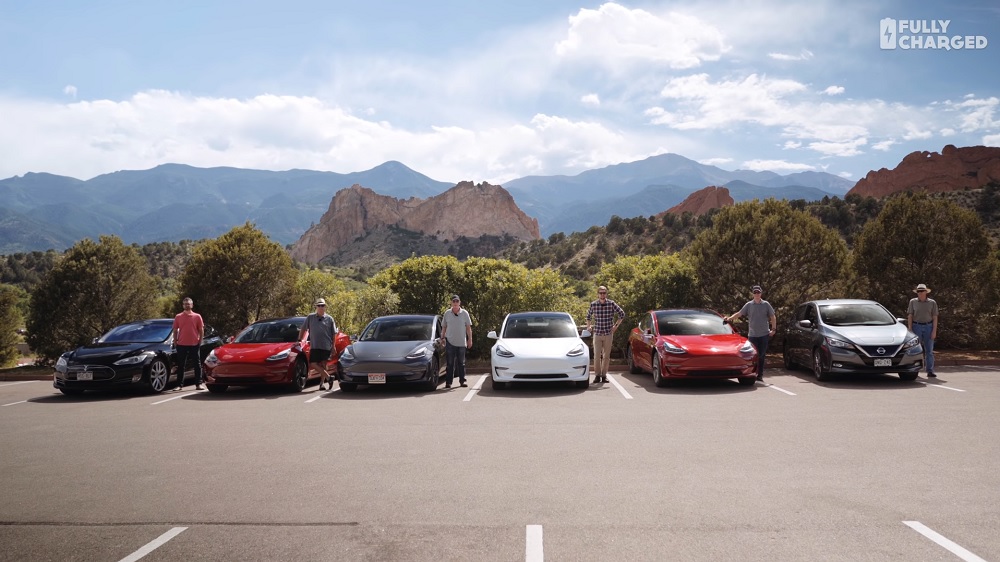
Aside from driving a vehicle that produces zero tailpipe emissions, one of the top benefits to owning an electric car is enjoying low operating costs. A 2018 University of Michigan study found that electric cars cost less than half as much to run, on average, than the typical gas-fueled vehicle.
What’s more, electricity prices tend to be far more stable than gas prices. That makes budgeting for one’s daily commute easier than with an internal combustion engine (ICE) vehicle. Over the last decade we’ve seen fuel costs run anywhere from $1.50 to as much as $4.00 a gallon based on supply and demand, global political strife, and other issues. At that, gas prices generally shoot up around national holidays, and rise in the summer when a specific fuel formula is mandated to help reduce emissions.
As of this writing, the AAA says the national average cost for regular unleaded gas is $2.56 a gallon, and it’s $3.16 for premium grade, which is required or recommended for a surprising number of cars these days. In Hawaii, which is saddled with the highest fuel costs in the nation, it averages $3.66 for regular and $4.02 for premium.
Let’s look at some specific projections of what it costs to power a comparable full-electric and and an ICE-powered auto. These estimates come from the Environmental Protection Agency’s fueleconomy.gov website, and they’re based on national average gas and electricity rates. You can use this site to check the fuel economy and operating costs for all current and past-model vehicles.
We’ll start with the subcompact Hyundai Kona Electric crossover SUV, which has an average range of 258 miles on a charge. It’s rated at the equivalent (MPGe) of 132/108-MPG city/highway. The EPA estimates it costs $0.91 to drive for 25 miles, with an average yearly charge of $550 with 15,000 combined city/highway miles. At the other end of the showroom sits another small crossover, the Hyundai Tucson. When equipped with its base 2.0-liter gasoline engine, the Tucson is rated at 23/30 mpg, with a 25-mile running cost at $2.56 and an annual fuel outlay of $1,550.
That means driving a Kona Electric instead of the Tucson will save the average owner $1,000 per year at current energy costs. Plus, if your provider allows billing for electricity based on demand at various times of the day, you may be able to save even more money by charging the vehicle in the middle of the night at a reduced rate.
Now lets factor in the added up-front costs. The base price for the Kona Electric is $38,045 versus $26,845 for the mid-range SEL version of the Tucson that’s close in terms of standard features. That’s a premium of $11,200, though $7,500 of it is recoverable for those who can take the one-time federal tax credit granted to electric car buyers. You’ll pocket another $5,000 in reduced energy costs over a five-year ownership period. All together that produces a net savings of $1,300 by going electric.
What about a bit larger, plusher, and more performance-oriented car? Let’s compare the Tesla Model 3 Standard Range Plus at $38,990 with the similarly priced BMW 330i sedan at $40,250. Rated at 140/124 MPGe, the Model 3 is estimated to cost $0.83 to drive 25 miles, with a $500 annual energy cost. The BMW will run $2.67 to cover those same 25 miles and cost an owner $1,600 a year at the pump. That’s an annual EV savings of $1,100, or $5,500 over five years. Plus, the Model 3 is around $1,250 cheaper up front than the BMW, and Tesla buyers are still eligible for the federal tax credit, though it’s been reduced to $1,875 and will expire on December 31.
In addition to being cheaper to run than gas-powered cars, EVs also save their owners cash on an ongoing basis because they generally cost less to maintain.
An EV owner avoids having to pay for things like fluid and cooling system flushes, and replacing the air filter, spark plugs, and drive belts. Sources suggest electric vehicle owners spend roughly a third of what conventionally powered auto owners do for regular service. Scheduled maintenance is typically limited to tire rotation, replacing the cabin air filter and wiper blades, topping off the washer fluid, and conducting various mechanical inspections.
Also, an electric car uses a simple single gear transmission and it lacks many of a conventional car’s mechanical components like an alternator, cooling system, starter, water pump, fuel pump, and an exhaust system that could eventually fail and need replacing.
How much money are we talking about here? An oil change for an ICE car typically costs around $25-$50 and is suggested for every 3,500-7,500 miles or twice a year. According to the website AutoMD.com, depending on what you drive and where you live it can cost around $153-$332 to swap out a set of spark plugs. You might have to pay $211-$478 to replace a muffler, $131-$226 to change a drive belt, and anywhere from $1,336-$1,877 to replace a timing belt, water pump and related components. If you’re driving a luxury car or reside where the prevailing wage for mechanics is high, you can expect to be charged a lot more than that.
And keep in mind that if you’re on a tight budget, you should consider buying a late-model pre-owned electric car–like any of those listed here on MyEV.com–instead of a new one to take advantage of more-affordable purchase prices and low ongoing operating costs.
ABOUT THIS ARTICLE:
Change Your Location
Weekly graph